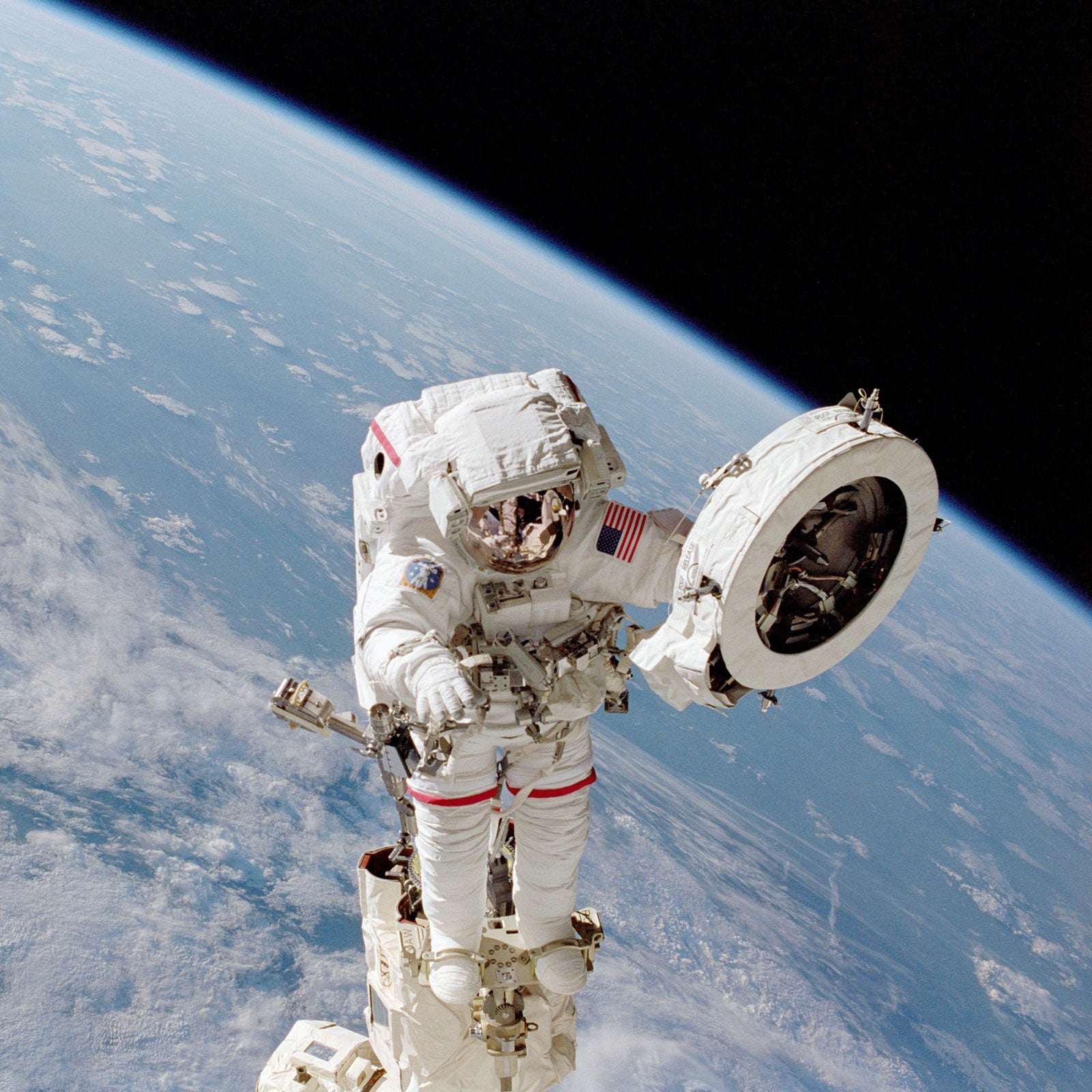Last month NASA canceled what would have been its first all-woman space walk because of a lack of a properly sized space suit. Anne McClain and Christina Koch were scheduled to repair the solar-panel batteries on the International Space Station. But they both needed a medium hard upper torso (HUT), and there was only a single functional one in that size on board. So on March 29, Nick Hague, taking McClain’s place in a large HUT, teamed up with Koch for the mission.
The decision drew anger from across the internet. “Hard to believe that with all the preplanning NASA does [it] didn’t prepare two suits that would fit women properly,” wrote one Twitter user. “It’s ridiculous that you don’t have enough suits for the women … complete and utter failure on nasa,” wrote another. Even Hillary Clinton chimed in.
“We have two medium hard upper torsos in space, two larges, and two extra larges,” NASA spokesperson Stephanie Schierholz told Outside. “However, one of the mediums and one of the extra larges are spares that would require additional time for configuration.” Necessary upgrades would take 12 to 14 hours—time the space-station crew didn’t have. Rather than postpone the mission, NASA opted to simply switch astronauts. “We do our best to anticipate the space-suit sizes that each astronaut will need, based on the space-suit size they wore in training on the ground,” says Schierholz. “However, individuals’ sizing needs may change when they are in orbit, in response to the changes living in microgravity can bring about in a body.” On earth, McClain had trained in both a medium and a large. It was only after her first space walk, on March 22, that she realized the medium fit her better. McClain took to Twitter to explain that she recommended someone else join Koch.
At face value, it all seems simple: NASA anticipated McClain needing one size top and was unprepared when she realized she needed another. Unfortunately, it’s not an isolated mishap but just the latest, and perhaps most public, iteration of the agency’s long-standing failure to provide women astronauts with suits that fit.
Designed and built in the 1970s, the space suits are modular, with an array of components that can be mixed and matched in varying lengths and sizes for the best fit, including eight sizes of elbows, 65 of gloves, and two waist widths (most of these components are also adjustable). According to Kathryn Sullivan, who in 1985 became the first American woman to perform a space walk, the modular design was intended to accommodate almost anyone, save for the smallest 5 percent of women and the largest 5 percent of men. “This design fails to do that,” she says.
Even with the smallest leg components, the suit never fit quite right for Sullivan, who is five foot six inches. “The suit’s knee was a bit above mine,” she says. “Every time I needed to bend, I wasn’t bending a natural joint.” Sullivan describes space suits as big, pressurized balloons. Bending the suit already requires significant energy, and with the knee joint in the wrong place, it was even harder. She also recalls that she had a quarter-inch of extra glove at her ring and pinky fingers, because those two digits are comparatively shorter than her others.
For Linda Godwin, another American woman to undertake a space walk, the shoulders were the biggest issue. (The hard upper torso is one of the few pieces of the space suit that’s not adjustable.) “On the average, female crew members are likely to have shorter shoulder widths, which means the flexing of the [suit’s] arms at the shoulder joint will not be at their anatomical shoulder,” she says. “This limits reach to some extent.”
According to Sullivan, today the smallest-size HUT is a medium. In the space-shuttle era, when Sullivan and Godwin were in the astronaut corps, NASA made a small. But even that was too big for many women. NASA never made an extra small. “There’s some genuine merit” to NASA’s reasoning for this, Sullivan says. At the time, Sullivan says, NASA’s explanation centered on the fact that an extra-small HUT would lack the surface area to bolt on the computer control panel and life-support pack or allow the suit’s shoulder joints to move without bumping into one another. Rather than just scaling down the existing design to an extra small, NASA would have had to come up with an entirely new concept for a smaller suit top. (NASA did not respond to Outside’s request for comment on the issues that Sullivan and Godwin highlight.)
That didn’t make the state of things any less frustrating for Sullivan and her female peers. “NASA was selecting women as mission specialists, and yet it had a space suit that could not allow them to do space walks,” she says.
NASA is now focusing its resources on designing new suits that fit a wider range of people, rather than producing more of the existing suits. “One of the things we’re looking at is how to design them to accommodate the largest possible range of sizes,” Schierholz says. What exactly this will look like, it’s hard to say. Sullivan says that lowering the torque that’s required to move each joint in the suit would help all astronauts but in particular smaller individuals who are at a physical disadvantage because of their shorter limbs. This facet of suit design may already be on NASA’s radar, according to Sullivan, who consulted for administrator Sean O’Keefe as recently as 2003.
“Framing the question as, ‘Should there be female-specific parts?’ distracts in the wrong direction,” Sullivan says. “Put aside whether it’s male, female, person of color…. the suit has to properly fit any individual who’s going to use it.”

